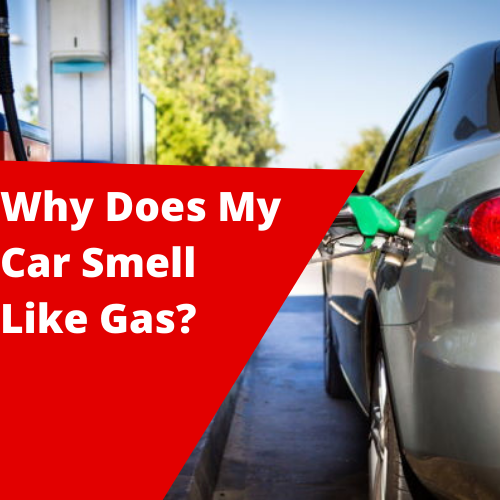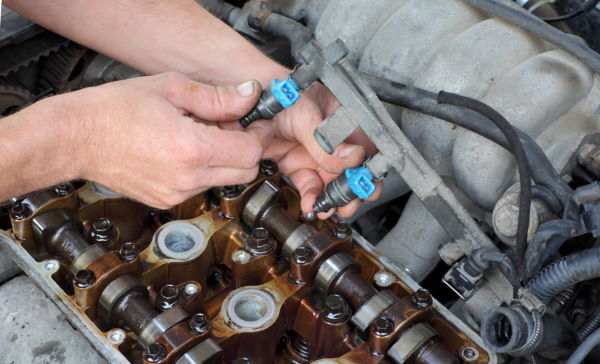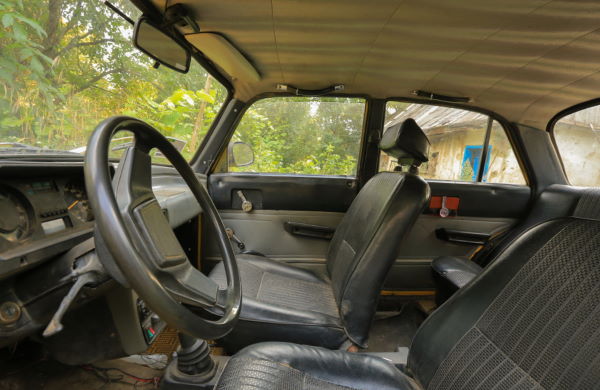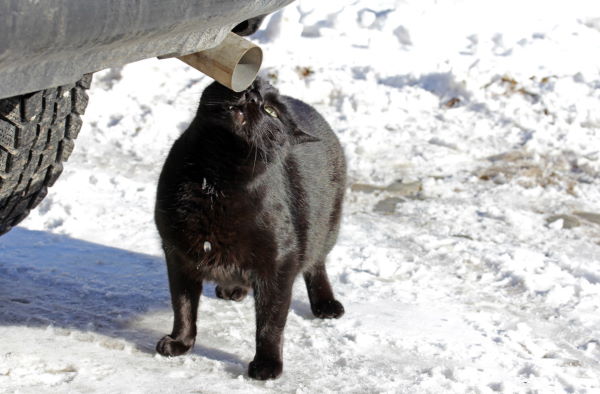
I grew up poor and we drove a lot of poorly-maintained cars. I’ve only been in 3 cars that have caught fire, and in each case, we were able to quickly get the fire put out.
That said, I’ve developed a healthy fear of gas leaks and anytime I smell gas inside of a car, I want to find the source immediately.
With high-mileage cars, it often comes down to vacuum leaks and a lean-running engine that backfires frequently.
Keep in mind that there’s a big difference between smelling gas outside of your car, and smelling it inside the cabin. It is much more dangerous to smell gasoline inside the vehicle. In extreme cases, it can make you sick.
However, there are more dangerous reasons why you may experience a fuel smell. Here are the most common reasons. Generally, it is something simple.
See Related: How To Dispose Of Old Gas Mix
Fuel Injector Leaks
If you notice that the gas smell is strongest near the engine, that could indicate a leak in the fuel system. Most vehicles use fuel injectors to meter the exact amount of fuel to the engine. As your car ages, the seals around these injectors can degrade, allowing gas fumes to leak into your HVAC system. If you have a leaking fuel injector, the car will smell like gas when running. A gas leak at the injector may not be visible to the naked eye. An engine that is hard to start when hot, and a check engine light with a P029D are both indications of a fuel injector leak. A mechanic is going to be helpful in tracking this down.

Fuel Line Leak
A leak from your fuel line is the most dangerous reason why your car smells like gas. Gasoline leaks can create an instant fire hazard.
The fuel line runs from the fuel tank in the rear of the car, and then back up to the engine compartment (it makes a loop, so to speak). The rubber part of the hoses can degrade and start to leak, but most of the fuel lines are metal and are apt to rust.
Sometimes the vent hose on top of the gas tank will leak gas vapor.
Diagnose this by checking all along the fuel line for visible leaks. Especially check the engine compartment for dripping fuel.
Broken Or Loose Spark Plugs
Since spark plugs create a seal between them and the combustion chamber, having a loose spark plug can let smells leak out. The combustion chamber is where the fuel and air mixes and then are ignited by the spark plug. If the spark plug has a bad seal it can leak fuel vapors next to your ventilation system, which pulls the smell into your car. If you are noticing misfires and difficulty accelerating, it might be worth having a mechanic tighten your spark plugs to make sure the sealing ring is seated well.

Fuel Tank Leak
The good thing about gas tank leaks is that they are the most visible. Look on the ground for a puddle of fuel underneath your car. Fuel tanks can last for years. However, road hazards can fly up underneath and puncture them. Rust can also be a problem on older cars causing a degraded fuel tank. If you notice wet spots underneath your car that could be a puddle of gas indicating a leaking fuel tank. You will also notice that your fuel level is dropping overnight.
Faulty Oil Cap O-Ring Or Gasket
A leaking oil cap is going to be noticeable for the obvious oil leaks it will create. You will see oil leaking around the oil fill cap and oil on the ground where your car is parked. This indicates that you need to replace the o-ring for your cap or to purchase a new cap to seal the oil reservoir. If your car is older, some exhaust fumes may be pushing their way out of the oil cap as well. It can also push oil fumes into your car.

Missing Or Loose Gas Cap
A missing gas cap is one of the most overlooked reasons for a fuel smell. Did you get it closed completely? It provides a critical seal to prevent fumes from escaping. A working gas cap is especially important on hot days when gas is evaporating. If the gas cap is loose, damaged or missing, it could be causing you to smell gas. A new gas cap is an affordable and easy fix.
You Just Refueled
It is common and harmless to smell gas after refuelling. It is quite likely that you spilled a little on your hand or stepped in some before getting into your car. Start by washing your hands and checking your clothes and shoes for the offending smell. Back in the day, I used to carry an extra shirt in my car for this exact reason. You never know when you need a fresh shirt.
Fuel Pressure Regulator Problems
So most modern cars do not have a fuel pressure regulator. Instead, they use a returnless fuel system and simply modulate the fuel pressures by adjusting the pump speed. If the right amount of pressure is in the fuel rails then the injectors will be able to get their dosage correct.
However, if you have a failed pressure regulator, then it can cause the car to run too rich or too lean. Having a too-rich fuel mixture will use excess fuel and will be a reason why your car smells like gas.
Exhaust Leak Fumes
Personally, I think that the smell of exhaust fumes is quite different from gas fumes. However, if your car is burning rich — it is using more fuel than it should — the exhaust fumes are going to smell very strongly of gasoline.
You will notice this smell especially when the car is idling, and the fumes can get into the cabin.
The concern about exhaust leaks is that these fumes are very harmful to humans. Carbon monoxide poisoning is a very real threat. Left unchecked, they will fill the cabin of your car.
If you listen carefully, you may be able to hear the exhaust leak since they tend to make your engine louder.

Faulty Charcoal Canister
A charcoal canister is used in many vehicles’ evap systems to capture the smell of gas. However, if your car is older or high mileage, it is possible that your charcoal canister may let the smells escape and get inside the cabin. A faulty charcoal canister can also cause difficulty when filling your tank and may trigger a check engine light.
I always get a kick out of how Scotty Kilmer approaches things. Here’s his take on the situation.
Frequently Asked Questions
Is It Safe To Drive A Car That Smells Like Gas?
No. Until you determine the source of the fuel smell, you need to avoid driving the vehicle. If you have identified a visible leak, you will want to have it towed to be repaired. I’ve been in enough vehicles that caught fire to know that it is something I wish to avoid as much as possible.
How To Prevent A Gas Smell Inside Your Car?
Regular maintenance is the key solution to preventing gas smells. Most of the items on this list will be identified during a regular oil change that comes with a 20-point check. You can also pay a service technician to diagnose the source of the strong fuel smell.
 Skip to content
Skip to content

